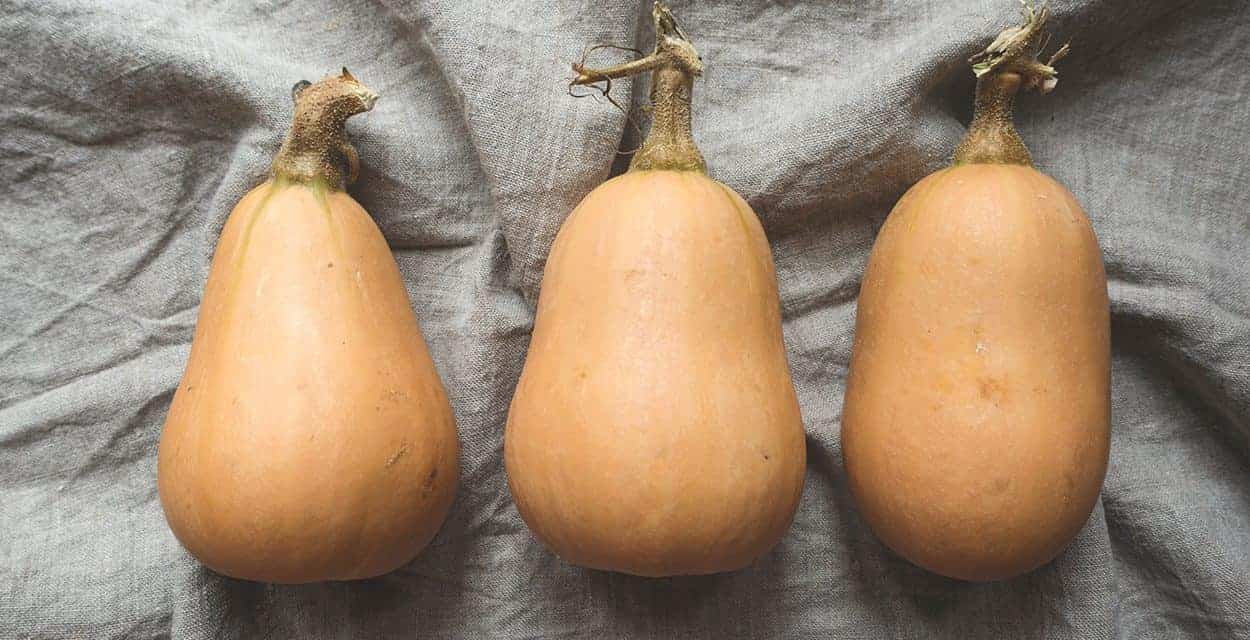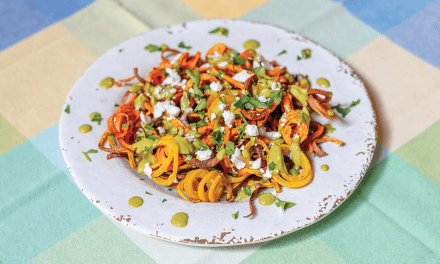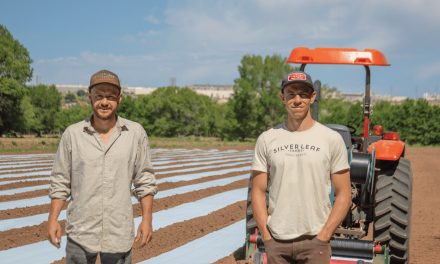
Fall cooking certainly centers around a few notable and versatile ingredients, not the least being the so-called winter squashes. Grocers are stocked full of these hard-skinned and oddly shaped squashes this time of year making them a reasonably priced and flavorful addition to a variety of dishes and preparations.
Butternut squashes, in one form or another have existed for hundreds if not thousands of years and are distinctly of the Americas. Unlike their summer counterparts like zucchini and yellow squashes, butternut and its sisters like pumpkins, hubbard and kabocha squashes develop hard outer skins and firm flesh which allows for over-wintering in storage. Commercial varieties now have slightly thinner skins than their ancestor varieties simply to make them a little easier to work with and thereby a little more pleasing to consumers.
The beauty of the butternut is in the flesh that when roasted or simmered becomes a creamy, slightly less sweet version of pumpkin crossed with sweet potato. And while its flavor is similar to pumpkin, it has a unique savory edge that lends itself to distinctly different dishes and seasonings than pumpkin does. Most would have a hard time imagining a pumpkin dish with cumin or rosemary while the butternut flavor shines with either.
Butternuts are easy to pick out at the farmers’ market or grocers – look for squashes that are uniformly beige, smooth and dull skinned, and free of blemishes. Green stripes are an indication of being under-ripe. Butternuts should be in the 2-3 pound range for normal recipes and will yield about three to four cups of cubed squash or puree for a recipe. Butternut also freezes well both in raw and cooked forms.
Nutritionally speaking, butternut squash is low in fat, high in fiber, and is a better source of potassium than bananas as well as a good source of dietary B6. It would be difficult to incorporate butternut squash into one’s everyday diet but during the fall and winter months, this powerhouse can easily be added.
With its hard outer shell, cutting the butternut can be a difficult and somewhat dangerous endeavor. The easiest way is to start with a sharp, heavy knife. After carefully removing any remnants of the stem at the top, cut the squash in half between the thin neck and the round bulb. Carefully cut the neck and bulb in half and scoop the seeds from the bulb. Remember to keep the seeds for cleaning and roasting later just like pumpkin seeds. The halves can now be roasted as is or peeled and diced according to your preparation. The skin slips off easily after roasting and the flesh is easiest to mash while still warm.
Just a bit of work pays off with enough squash to use in several dishes. A simple puree in a blender with a splash of cream and spices makes a quick soup. Toss cubed squash with olive oil and roast, then drizzle with a wonderful local syrup as a quick side dish. Roasted chunks are great to stir into pasta or mash instead of potatoes. Add diced, cooked and cooled butternut to salads, omelets, or anywhere a bright taste and splash of color is called for. Roasted cubes also make a fantastic base for hummus that can be prepared as usual, substituting the butternut for the garbanzo beans and lowering the amount of oil and water that may be added.
Regardless of how you cut it, scoop it, roast or puree it – butternut squash is one of the fall favorites you will come to look forward to every year. Enjoy!
Edible celebrates New Mexico's food culture, season by season. We believe that knowing where our food comes from is a powerful thing. With our high-quality, aesthetically pleasing and informative publication, we inspire readers to support and celebrate the growers, producers, chefs, beverage and food artisans, and other food professionals in our community.












